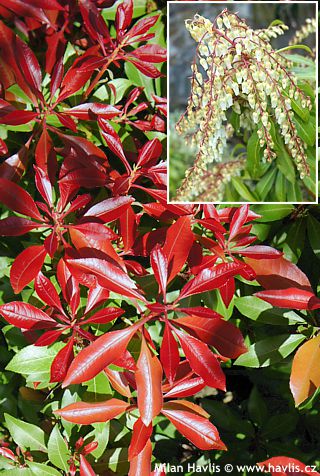Photinia glabra 'Parsur' DYNAMO RED Japanese photinia, red tip photinia
Photinia
Japanese photinia is one of the parents of a very important photinia hybrid p. x fraseri which brought improved hardiness to the evergreen photinia family. The species is tender for zone 6 and grows relatively fast – in its native habitat it can grow into substantial shrubs reaching a height of about 6 meters but here we grow smaller varieties with good hardiness.
DYNAMO RED is an Australian variety of Japanese photinia from the town of Kulnurra, where it was selected by its breeder John Robb in 2001. One parent was the hardy variety Red Robin and the other was a male plant of p. glabra, so botanically the result should only be referred to as hybrid photinia and not photinia glabra. Patent No. PP19390 was granted in 2008.
DYNAMO RED photinia will win you over especially for its leaves. From late April to about mid May bright red leaves emerge and their colour so rich like no other photinia I have seen so far. The color is pure red, not burgundy, although as the leaves mature they gain maroon and mahogany hues before they turn solid green. Moreover, they are undulated like the leaves of Brenelia Portugal laurel. They are evergreen, about 10x3 cm, broadly elliptical, glossy, and finely serrated at margins. Its newly emerging red foliage may resemble those of pieris (lily-of-the-valley shrub). Compared to other photinias DYNAMO RED keeps its older leaves more reliably even in spring when new leaves emerge. In midsummer the red show repeats as the plant makes new leaves again.
Older plants produce medium-sized umbels of creamy white flowers in late May, whose scent is so specific that some call it interesting but others consider it smelly. They are followed by tiny, inedible fruits on long stalks, which ripen to a deep raspberry pink color in autumn.
It grows vigorously forming upright yet spreading shrubs with many lateral branches. You can use this feature in evergreen hedges and in places where you need a quick and beautiful filler. It can be pruned and shaped in any way, cut it anytime from early spring to midsummer. Spring pruning encourages growth and summer trimming is used for shaping.
Japanese photinia likes moist but not wet ground and fertile soil. It is very tolerant to alkaline (calcareous) soils and once established it is very drought resistant so it does not require additional watering. Nevertheless, due to the high evaporation of water from the leaves throughout the year, we recommend mulching it properly, especially before winter, and occasionally watering even in the winter if the ground is not frozen. Experienced hardiness is -17 ° C without any signs of damage, we assumed that it can handle even more – trials continue.
Last update 25-05-2022

































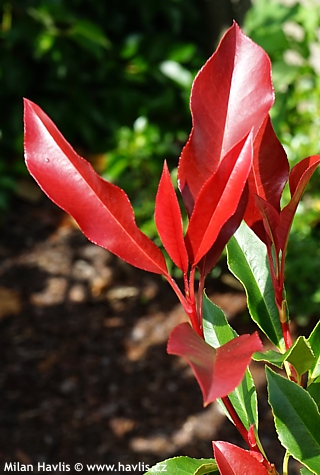
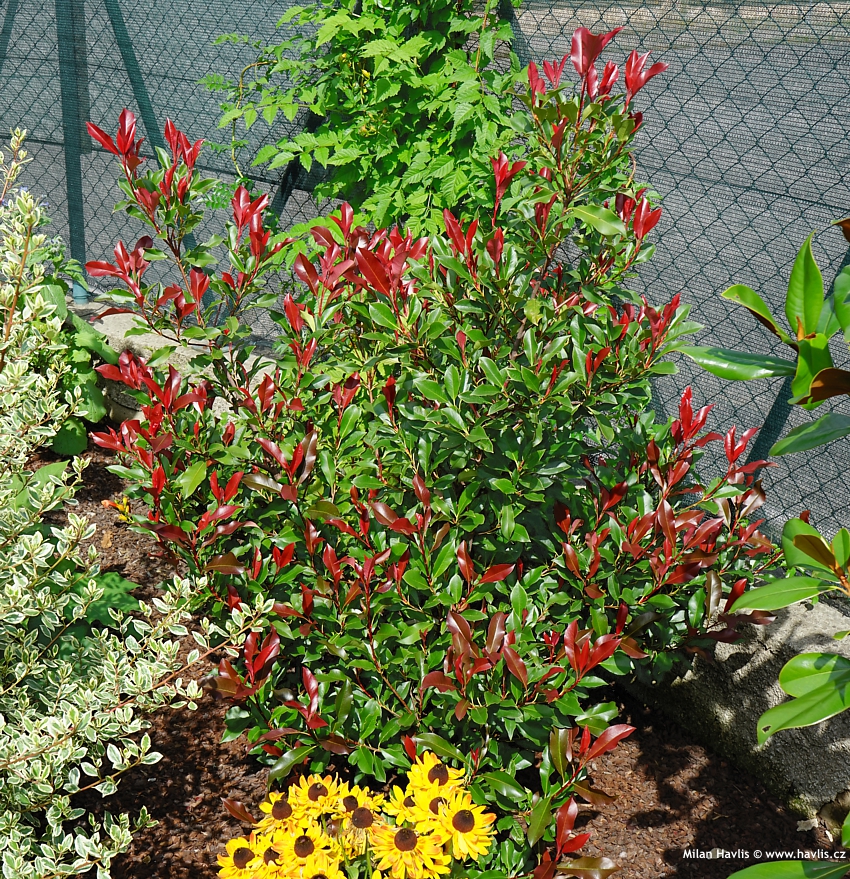
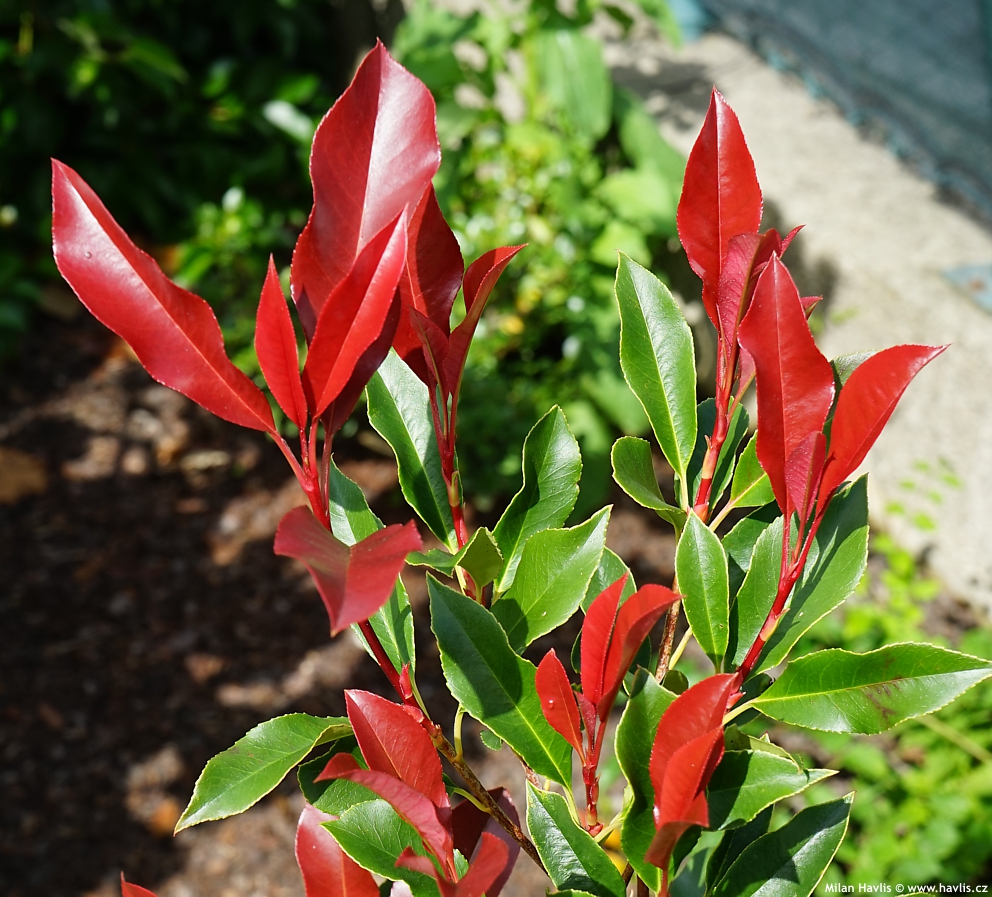
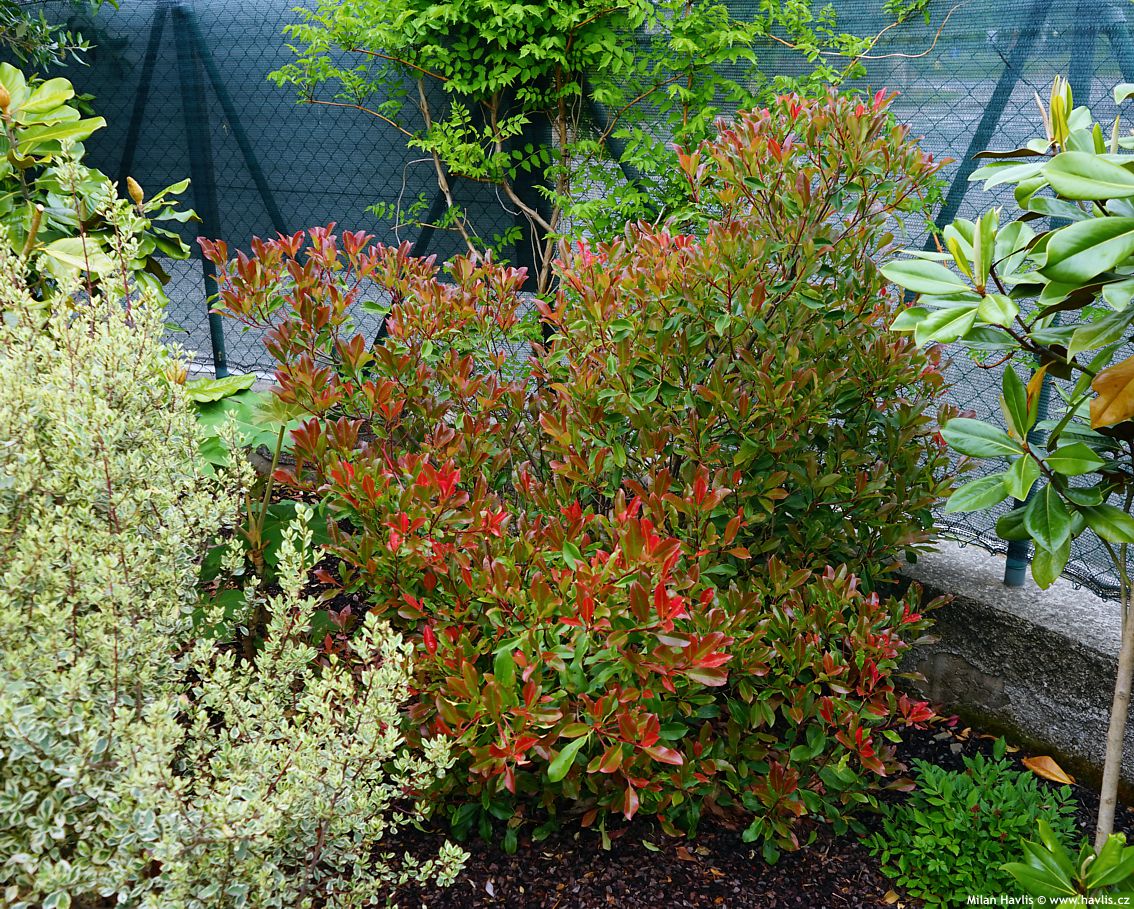



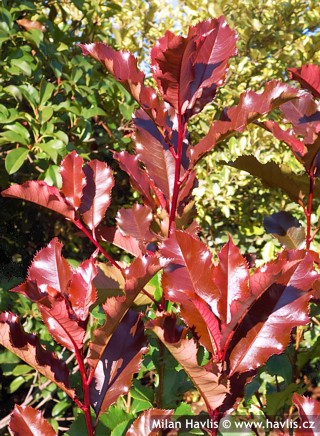
.jpg)
